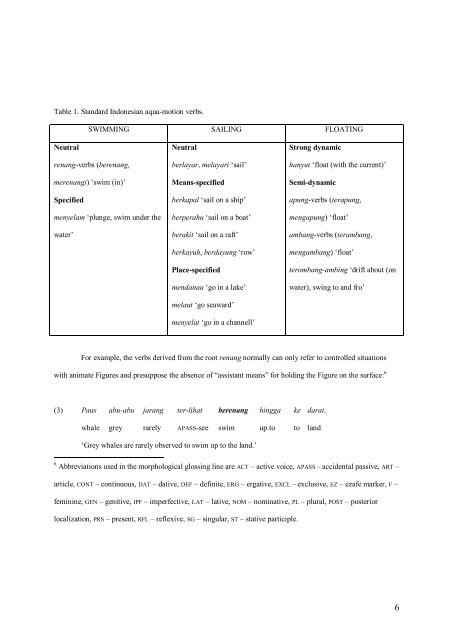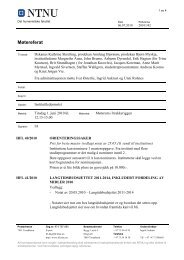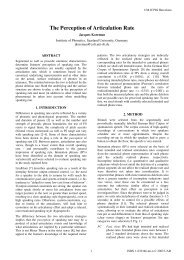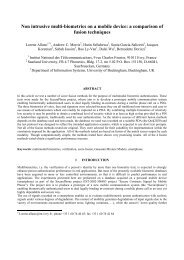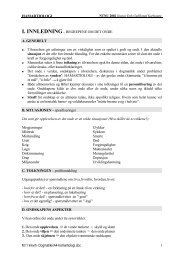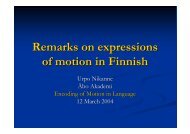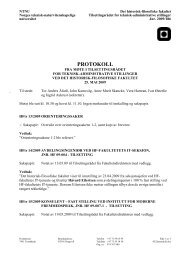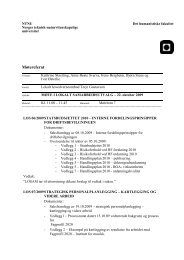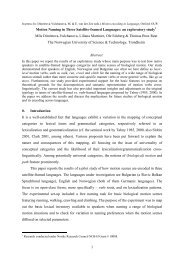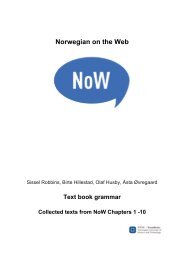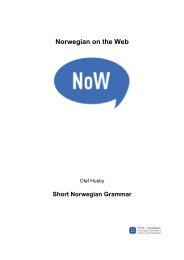Domains of aqua-motion: a case study in lexical typology Yury A ...
Domains of aqua-motion: a case study in lexical typology Yury A ...
Domains of aqua-motion: a case study in lexical typology Yury A ...
Create successful ePaper yourself
Turn your PDF publications into a flip-book with our unique Google optimized e-Paper software.
Table 1. Standard Indonesian <strong>aqua</strong>-<strong>motion</strong> verbs.<br />
SWIMMING SAILING FLOATING<br />
Neutral<br />
renang-verbs (berenang,<br />
merenangi) ‘swim (<strong>in</strong>)’<br />
Specified<br />
menyelam ‘plunge, swim under the<br />
water’<br />
Neutral<br />
berlayar, melayari ‘sail’<br />
Means-specified<br />
berkapal ‘sail on a ship’<br />
berperahu ‘sail on a boat’<br />
berakit ‘sail on a raft’<br />
berkayuh, berdayung ‘row’<br />
Place-specified<br />
mendanau ‘go <strong>in</strong> a lake’<br />
melaut ‘go seaward’<br />
menyelat ‘go <strong>in</strong> a channell’<br />
Strong dynamic<br />
hanyut ‘float (with the current)’<br />
Semi-dynamic<br />
apung-verbs (terapung,<br />
mengapung) ‘float’<br />
ambang-verbs (terambang,<br />
mengambang) ‘float’<br />
terombang-amb<strong>in</strong>g ‘drift about (on<br />
water), sw<strong>in</strong>g to and fro’<br />
For example, the verbs derived from the root renang normally can only refer to controlled situations<br />
with animate Figures and presuppose the absence <strong>of</strong> “assistant means” for hold<strong>in</strong>g the Figure on the surface: 6<br />
(3) Paus abu-abu jarang ter-lihat berenang h<strong>in</strong>gga ke darat.<br />
whale grey rarely APASS-see swim up.to to land<br />
‘Grey whales are rarely observed to swim up to the land.’<br />
6 Abbreviations used <strong>in</strong> the morphological gloss<strong>in</strong>g l<strong>in</strong>e are ACT – active voice, APASS – accidental passive, ART –<br />
article, CONT – cont<strong>in</strong>uous, DAT – dative, DEF – def<strong>in</strong>ite, ERG – ergative, EXCL – exclusive, EZ – ezafe marker, F –<br />
fem<strong>in</strong><strong>in</strong>e, GEN – genitive, IPF – imperfective, LAT – lative, NOM – nom<strong>in</strong>ative, PL – plural, POST – posterior<br />
localization, PRS – present, RFL – reflexive, SG – s<strong>in</strong>gular, ST – stative participle.<br />
6


